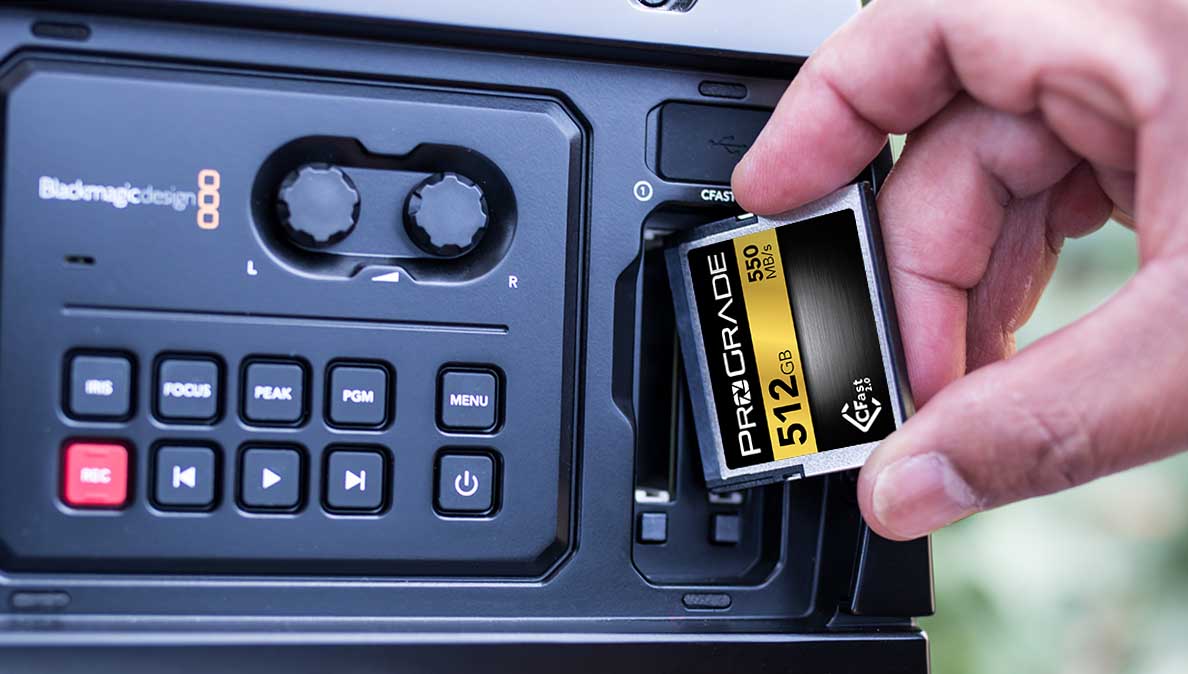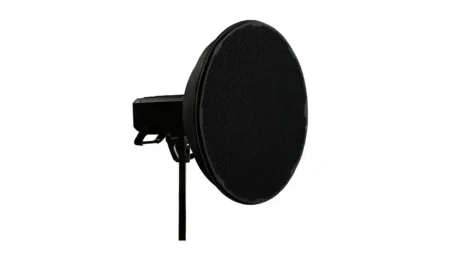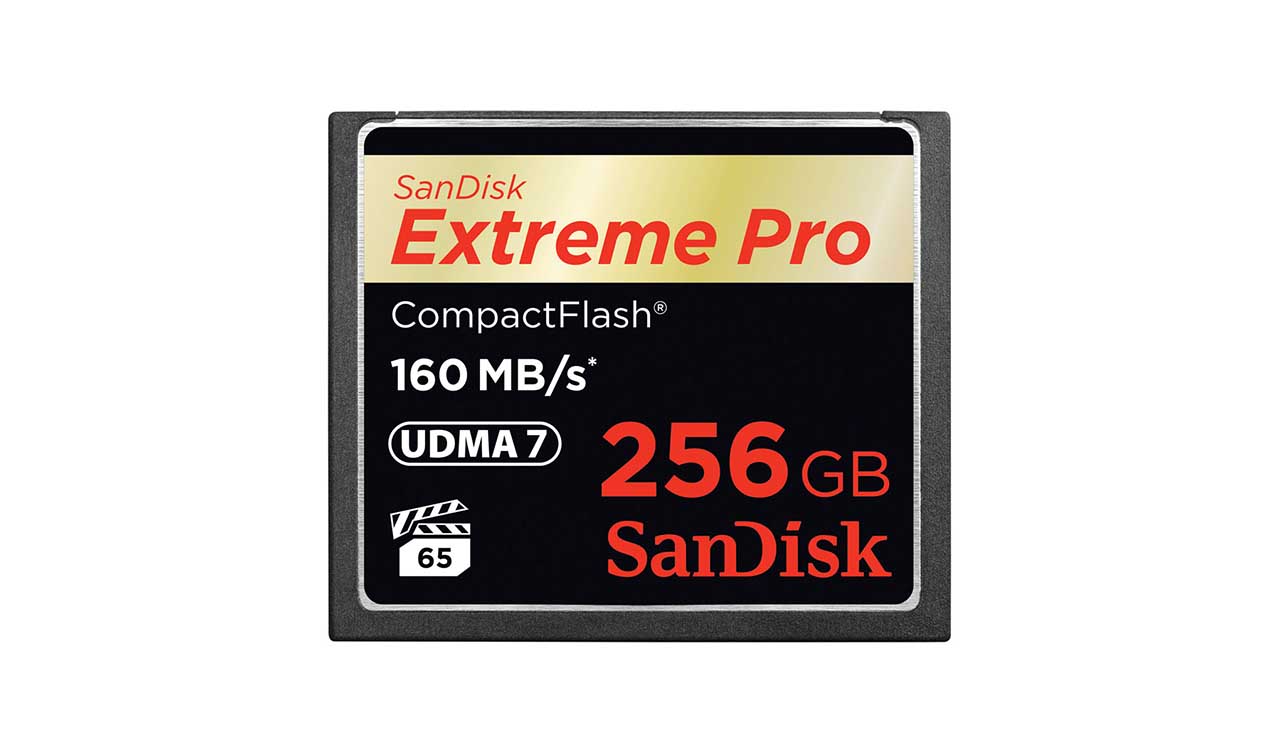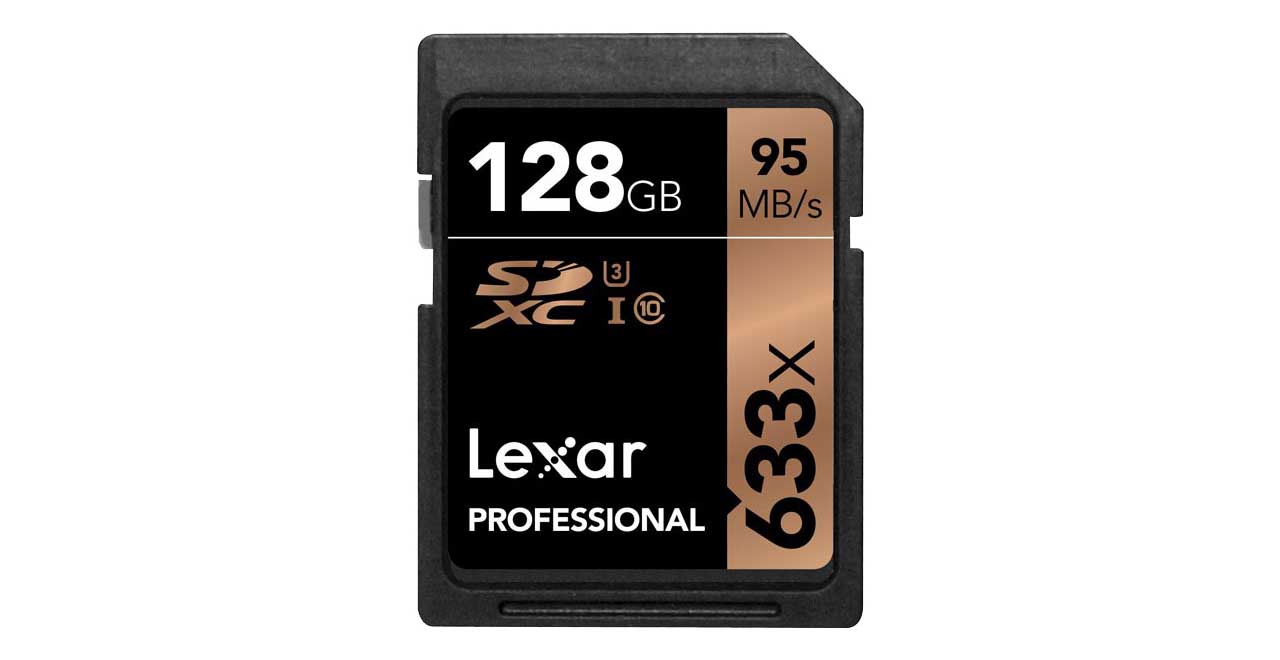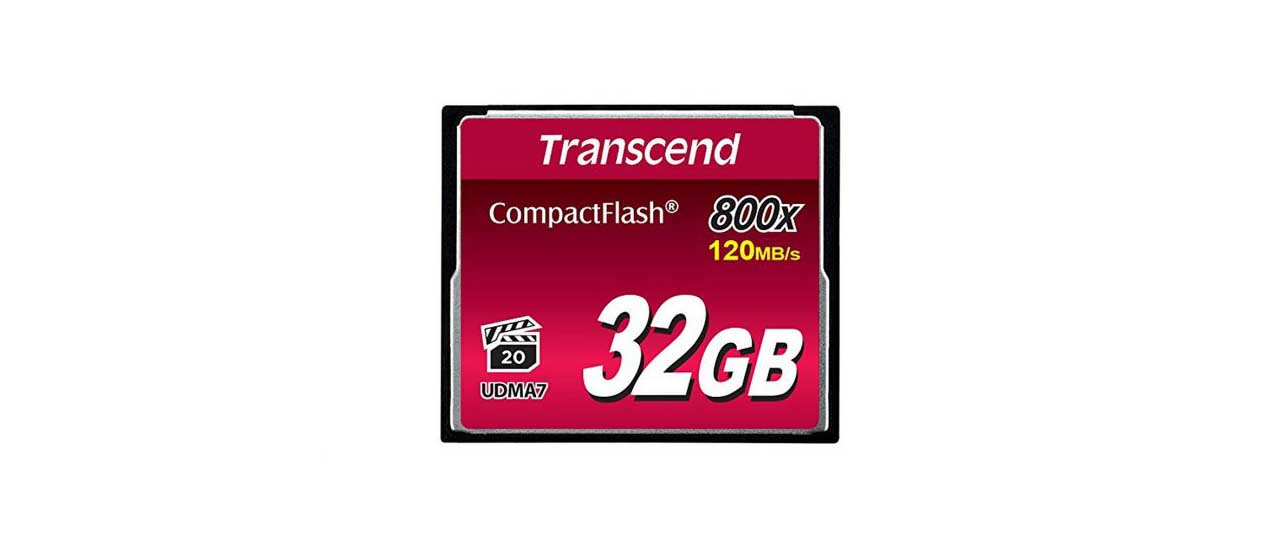One of the key decisions you’ll have to make when shooting video footage is which memory card is best for your needs. In this buyer’s guide we explain how to choose and use memory when movie-making and outline the best memory cards for video that will give you both power and peace of mind.
What you’ll learn
- Why you’ll need memory cards for video
- Key memory card formats, speeds & slots explained
- The pros and cons of memory cards
- Top buying tips for choosing memory cards
- Our ‘top five’ memory cards for shooting videos
With a mind-boggling variety of technical terminology such as read speeds, write speeds, UHS Speed Classes, XQD, SD, CF, V Class and many more the world of choosing and using memory cards to capture video footage can easily appear to be confusing. To help to guide you through the factors involved, we explain what you need to know when choosing the best memory cards for video shooting.
With many of today’s cameras – whether they be mirrorless, DSLRs or professional digital cinema cameras – now offering video shooting at 4K resolutions and upwards the choice of which memory cards to use is crucial. Unsurprisingly, shooting video eats up much more memory than shooting stills… so which cards you choose to use is key.
To give you some guidance in this guide we’ll examine the pros and cons of different types of memory cards, what you should consider when buying memory cards for shooting video and our recommended ‘best buys’…
Which memory cards can I use for video?
Historically, the two most common card formats have been Secure Digital (SD) and CompactFlash (CF) cards. SD cards are used in all types of cameras – from point-and-shoot models to pro digital cinema cameras – with the smaller microSD cards now often utilised in cameras such as HD camcorders and aerial cameras. CF cards are more robust and durable and are often used in high-spec DSLRs and digital cinema cameras.
Many cameras that record digital video offer dual memory card slots. For example, Panasonic’s GH5S camera features two SD card slots but some cameras offer a mixture of card formats (maybe CF and SD) in their dual slots. The key benefit of dual card slots is that once one card is full of data you can continue to record on the other one. To ensure this happens smoothly learn exactly how the dual card slots in your camera work.
Understanding read vs write speeds
Memory cards have both read speeds and write speeds. Write speeds describe how quickly images or video can be saved to a card. Read speeds denote how fast data can be retrieved from a card; for example, when transferring your video footage to an external hard drive. Generally read speed is always faster than write speed, but write speed is absolutely essential for video as you’ll need your cards to have both the speed and the capacity to deal with recording large amounts of digital video data.
Card speed is shown by either a multiplication value – each ‘x’ value represents 0.15MB/sec, so 2000x multiplied by 0.15MB/sec denotes 300MB/sec – or a ‘Class’ rating. Class ratings denote the minimum write performance to record video – a Class 2 card can handle sustained writing of data at 2MB/sec, a Class 4 card will handle 4MB/sec, Class 6 at 6MB/sec and Class 10 is the fastest at 10MB/sec. You’ll need at least a Class 4 card to record Full HD 1080p video, but it’s probably best to go for Class 10.
There is also a V Class rating, which was created by the SD Association. The highest V rating is V90, which denotes a minimum sustained speed of 90MB/sec. The other V Class ratings are V60, V30, V10 and V6, in which the numbers denote the MB/sec speed.
For memory cards it’s better to work off what’s known as the ‘sustainable speed’, rather than the ‘achievable speed’. As a rule of thumb if you’re shooting 4K RAW you’ll need write speeds of at least 75MB/sec for it to keep up without dropping frames.
UHS Speed Classes indicate how quickly video content can be transferred to a memory card. UHS-I enables maximum transfer speeds of 104MB/sec, while UHS-II enables speeds of up to 312MB/sec. Within the UHS Speed Class there are two designations, U1 and U3, which represent minimum write speeds of 10MB/sec and 30MB/sec respectively. For video it’s usually best to choose a U3 designated card as this will cope with 4K video.
CFast 2.0 cards were once the leaders in terms of speed. The original CFast 2.0 card, in 2013, promised read speeds of 450MB/sec and write speeds of up to 350MB/sec. CFast and XQD cards were created by the CompactFlash Association (CFA) to replace the CF card format as it had reached its maximum performance capabilities.
In their current versions CFast cards have a theoretical limit of 600MB/sec and XQD cards 1000MB/sec. They are ideal for shooting 4K video resolutions and beyond. XQD cards are not compatible with as many cameras as some other card types but they do work with Nikon DSLRs and mirrorless cameras, the Sony FS7 and Panasonic’s LUMIX S1 and S1R full-frame cameras.
Every memory card has its capacity shown on it – for example, from 4GB up to 512GB. The capacity values always double, so cards will have capacities of 4GB, 8GB, 16GB, 32GB, 64GB and so on. Naturally enough, the larger the value the more capacity a card has to store your video footage.
Tips for buying the best memory card for your video needs
Memory card choices can be baffling but you must be aware of the fastest card speed that your camera supports. Check the instruction manual or manufacturer’s website to ensure that your preferred card matches what the camera is capable of handling.
Ask yourself how long you plan to shoot for and how many cards you’ll need to do so? You can quickly make calculations based on the amount of time you plan to shoot for and the resolution you’ll be shooting at. Make sure you have enough storage capacity to cover your shoot and always bring at least one extra card over above your estimated required capacity.
In general, it’s safer to stick to high-capacity cards from brands such as Lexar, Kingston, SanDisk, Sony and Transcend. They are usually faster, more reliable, more robust and will provide more back-up measures for your work.
When you’re buying any memory card for video shoots consider the required capacity, compatibility with your camera, read speed, write speed and price. For more in-depth advice about memory cards to shoot video check out our recent guide on how to choose and use the right memory cards for shooting video.
Although many other types of memory cards are available for simplicity this blog outlines the ‘best’ current cards for shooting video in terms of quality of different card types, memory capacity, speed and affordability.
Don’t forget that you have other options and remember to always make sure if your needs and budgets match our recommendations.
The best memory cards for video you can buy today
SanDisk Extreme PRO CompactFlash
If your camera has a CompactFlash (CF) card slot this ‘older’ type of card offers a capacity of up to 256GB, a write speed of up to 150MB/s and a read speed of up to 160MB/s. The minimum sustained write speed is 65MB/s and this card should comfortably handle shoots in Full HD 1080p and up to 4K.
If you have a ‘longer in the tooth’ DSLR, like a Canon EOS 5D Mark IV, this card should be sufficient for your video needs, but it’s true to say that it is a tad dated compared to more modern SD variants. However, it is capable of handling pro-grade video shoots and, if it’s compatible with your camera, this card has reasonably impressive capacity and speed options.

Sony Professional XQD G Series
We’ve alluded to the fact that XQD memory cards aren’t as widely compatible as other current card formats but one look at the read and write speeds of this card gives you an idea of its potential for video. Write speed is up to 400MB/s and read speed is up to 440MB/s with a maximum capacity version of 256GB.
The speeds lend themselves to recording and working with 4K video footage and should catch the eyes of users of Nikon mirrorless or DSLR cameras, as well as those of you who may have already invested in a LUMIX S1 or S1R full-frame mirrorless model. One other thing to note is that Sony pioneered this card format, so it currently makes the best XQD cards on the market.
Lexar Professional 633x SDHC/SDXC UHS-I
Arguably the best current SD card on the market for capacity this Lexar card goes up to 512GB and features write speeds up to 45MB/s and read speeds of up to 95MB/s. As you can see the capacity is the headline feature as the read and write speeds are not top notch.
What you should consider here is if your video project is not time sensitive, then capacity is probably the paramount factor over the need for uber-fast read and write speeds. This option is more than capable of handling high amounts of Full HD and 4K information and is more targeted at DSLR movie shooters. As its name suggests this card is available in SDHC or SDXC variants.
Transcend CompactFlash 800
With a maximum capacity version of this CF card at 256GB – it’s available from 32GB up to 256GB variants – filmmakers have an eminently affordable, high capacity option for video. Write speeds go up to 60MB/s and read speeds reach up to 120MB/s so, like the Lexar card mentioned above, you’re really looking at the value of capacity over speed with this card.
You’ll probably be interested in such a card if you own a slightly older DSLR model and may be more likely to shoot at only up to Full HD 1080p video, rather than up to 4K. As CF cards go it’s solid, durable and reliable. Interestingly, it also has an error-correcting code built in to the card that can detect and correct errors during your file transfers.

SanDisk Extreme PRO SDXC UHS-I
This is a very solid SDXC format offering from SanDisk with a maximum capacity of up to 512GB. Write speeds go up to 90MB/s and read speeds are up to 95MB/s. It’s capable of handling 4K video footage and is amongst the best current SD cards on the market in terms of handling significant amounts of data.
Once again the read and write speeds are obviously not at the top of the potential range but for non-pro video purposes they are more than capable of giving you a reasonable speed of workflow. Also in its favour is the fact that you’re likely to get change from £50 for this card, so it won’t hit you too hard in the pocket.
5 factors to consider when choosing your memory card
The field of memory cards may seem like a dense and confusing one, but it’s worth remembering there are really just five factors to consider
- Card type
- Compatibility with your camera
- Speed
- Total capacity
- Price
In terms of ensuring you can shoot and store quality video it’s not worth compromising on any of these.
Whilst online memory card deals may be very appealing, I always recommend that you should only buy cards from an established photo/video dealer or a large electronics chain. There’s no point in taking any chances when capturing and transferring your video footage.
The cards named above are only a guideline to some of the best that you could buy, so do your homework to make sure you get exactly what you need. If you get your choice right you’ll be secure in the knowledge that you can shoot, store and share your prized footage safely.
